- Home
- Gerald Durrell
The New Noah
The New Noah Read online
This book is for my niece
SAPPHO JANE
and my nephews
GERALD MARTIN
and
DAVID NICHOLAS
Contents
Introduction
PART ONE
Collecting in the Cameroons
1. In which I have a tug-of-war with a Nile monitor
2. In which I become involved with baby crocodiles, bushtailed porcupines and various snakes
3. In which Puff and Blow take over
4. In which I am bitten by bandits
5. In which I become involved with a number of monkeys
6. The story of Cholmondely the chimpanzee
7. Problems of hairy frogs, tortoises, and other beasts
8. In which the new Noah sets sail in his ark
PART TWO
Hunts and Captures in Guiana
9. In which Amos the ant-eater leads us a dance
10. Toads that have pockets, and other weird beasts
11. In which Cuthbert the curassow causes trouble
12. In which I meet several new animals including the moonshine unwarie
13. In which I catch a fish with four eyes
14. Which describes the giant cayman and the shocking electric eel
PART THREE
Perambulations in Paraguay
15. In which I hunt with the gauchos
16. In which I have trouble with toads, snakes, and Paraguayans
17. The Story of Cai; Pooh; and Sarah Huggersack the only ant-eater film star
Afterword
Introduction
Most people at one time or another pay a visit to the zoological gardens. While there, they are so interested in the animals to be seen that they do not stop to wonder how a great many of them got to the zoo in the first place.
Now I am an animal collector and my job is to travel to the faraway places where these beasts live, and bring them back alive for the zoos. In this book I have described three animal-collecting trips that I have taken to various parts of the world, and have tried to show how the difficult but interesting job of collecting is done.
Most people have no idea of the hard work and worry that goes into a collecting trip to produce the fascinating birds and animals that they pay to see in the zoo. One of the questions that I am always asked is how I became an animal collector in the first place. The answer is that I have always been interested in animals and in zoos.
According to my parents, the first word I was able to say with any clarity was not the conventional ‘Mamma’ or ‘Dadda’, but the word ‘Zoo’, which I would repeat over and over again in a shrill voice until someone, in order to shut me up, would take me to the zoo. When I grew a little older, we lived in Greece and I had a great number of pets, ranging from owls to sea-horses, and I spent all my spare time exploring the countryside in search of fresh specimens to add to my collection of pets. Later on I went for a year to Whipsnade Zoo, as a student keeper, to get experience of the larger animals, such as lions, bears, bison, and ostrich, which were not so easy to keep at home. When I left, I luckily had enough money of my own to be able to finance my first trip and I have been going out regularly ever since then.
Though a collector’s job is not an easy one and full of many disappointments, it is certainly a job which will appeal to all those who love animals and travel. In this book I have tried to show that the hard work and disappointments are nearly always more than offset by the thrill of your successes and the excitement and pleasure not only of capturing your animals but of seeing them alive in their natural haunts.
PART ONE
Collecting in the Cameroons
In which I have a tug-of-war with a Nile monitor
Before starting out on a collecting trip you have to know what wild animals are wanted by the zoos; then, knowing their whereabouts, you choose those areas in which not only the specimens required are to be found, but other rare creatures as well. Zoologists and biologists, generally, have not the time or the money to travel to these distant corners of the earth to find out about wild life on the spot. Therefore, the animals have to be caught and brought back to them so that they can be studied more conveniently in the zoo. Now, the larger and commoner creatures from most parts of the world are well represented in nearly all zoological collections, and quite a lot is known about them. So it was the smaller and rarer beasts, about which we know so little, that I wanted to collect. It is about them that I am going to write.
From many points of view it is sometimes the small animals in a country that influence man more than the large ones. At home, for instance, the brown rat does more damage every year than any of the larger creatures. It was for this reason that I concentrated during my collecting trips on the smaller forms of life. For my first expedition I chose the Cameroons, since it is a small, almost forgotten corner of Africa, which is more or less as it was before the advent of the white man. Here, in the gigantic rain forests, the animals live their lives as they have done for thousands of years.
It is of great value to get to know and study these wild creatures before they are influenced by civilization, for wild animals can be affected just as much by change as people. One of the results of cutting down forests, building towns, damming rivers, and driving roads through jungle, is an interference with their way of life, and they have either to adapt themselves to the new conditions or die out.
It was my intention to find out all I could about the animals of the great forests and to bring back as big and varied a collection as possible of its small fauna, the creatures that the African calls in pidgin English, ‘small beef’.
When I arrived in the Cameroons for the first time what struck me most was the very vivid colouring of the undergrowth and the enormous size of the trees. There were leaves of every shade of green and red imaginable, from bottle green to pale jade, and from pink to crimson. The trees towered up to two and three hundred feet into the air, their trunks almost the circumference of a factory chimney, and their massive branches weighed down with leaves and flowers and great coiling creepers.
I landed at the little port of Victoria and had to spend a week or so there, preparing for the journey into the interior. A great many things had to be done before I could start on the actual work of collecting. There were Africans to engage as cooks or houseboys, various stores to buy and a great many other things as well. Also, the necessary permits to hunt and capture the animals I was after had to be obtained, for all the animal life in the Cameroons is strictly protected and, unless you obtain Government permission, you are not allowed to capture or kill any animals or birds. Eventually, when all this had been done, a lorry was hired and the food and equipment piled into it, and I set off. In those days there was only one way leading into the interior of the Cameroons and this, if followed far enough, led you to the village of Mamfe on the banks of the Cross River, some 300 miles from the coast. It was at this village I had chosen to make my base camp.
The earth you find in the Cameroons is red, very like the earth you see in Devon, and so the road, winding through the hills, was a bright brick colour, lined on each side by immense forest trees. As we drove along, I could see hosts of brilliant birds feeding in the trees, tiny glittering sun-birds sipping nectar from the flowers, great glowing plantain-eaters, like giant magpies, eating wild figs; and sometimes the passage of the lorry would frighten a flock of hornbills which would fly off across the road, making tremendous swishing noises with their wings, and honking dismally.
In the short undergrowth at the side of the road scuttled large numbers of agama lizards. These reptiles are almost as bright in colour as the birds, for the males have vivid orange heads, and the body is decked out in blue, silver, red, and black, while the females are rose-coloured w
ith bright apple-green spots. They have a curious habit of nodding their heads vigorously up and down, and look very peculiar dashing here and there in pursuit of each other, suddenly stopping to nod their brightly-coloured heads. Almost as numerous as these lizards were the pygmy kingfishers, minute little birds, smaller than a sparrow, with bright blue backs, orange shirt fronts, and coral red beaks and feet. Unlike the English kingfisher, these little birds live on locusts, grasshoppers, and other insects. Dozens of them were perched on the telegraph wires, or on the stumps of dead trees on the roadside, all peering down hopefully into the grass and bushes below. Occasionally, one of them would drop off his perch like a stone and, when he fluttered out of the grass again, a grasshopper that was almost the same size as himself would be clutched firmly in his beak.
Three days after leaving the coast I reached Mamfe. I had chosen this village as a base camp for a variety of reasons. When you are collecting wild animals you have to choose your base very carefully: it has to be within fairly easy reach of some sort of store, so that you can obtain sufficient supplies of tinned food, nails, wire netting, and other important things, and also it has to be fairly near a road, so that when the time comes to depart you can bring your lorries near enough to the camp to load up.
Secondly, you have to make sure that your base is going to be in a good collecting area, a place where there are not too many farms or people so that most of the wild animals have been driven away.
Mamfe was excellent in this respect, so a camp clearing was made on the banks of the river, about a mile away from the village, and the big marquee I had brought was erected. For the next six months this marquee was to act as a home for myself and my animals.
The first thing I had to do, before I could even start collecting, was to make sure that the base camp was functioning smoothly.
Cages, pens, and ponds had to be built, as well as palm-thatched huts for the Africans I employed. I had to arrange for an adequate food and water supply, for when you have collected two or three hundred animals and birds, they manage to eat and drink a very great quantity every day. Another important thing was to interview as many of the local chiefs as possible, showing them drawings and photographs of the creatures I wanted, and telling them how much I was willing to pay for specimens. Then, when they went back to their villages, they told their people, and so eventually I had all the villagers for miles around helping me in my work.
Then, when everything was ready and there was a great pile of empty cages waiting to be filled, I could start hunting the strange animals that I had travelled so far to find.
There are really no set rules about capturing animals. It all depends on the type of country in which you are operating and the sort of animals you want to get hold of. There were several different methods that I used in the Cameroons, and one of the most successful was to hunt in the forest with the aid of native hunting dogs. These dogs wear little wooden bells round their necks, so that when they disappear into the thick undergrowth in pursuit of an animal you will know whereabouts they are and can follow them by the clonking noise these bells make.
One of the most exciting hunts of this sort occurred when I went up the mountain called N’da Ali, twenty-five miles from the base camp. I had been told by native hunters that on the upper slopes of this mountain there was found a rare animal which I particularly wanted, the black-footed mongoose, a very large mongoose, pure creamy-white in colour with chocolate-coloured legs and feet. I knew that a live specimen of this animal had never been seen in England, and so I was determined to try to capture one if I possibly could.
We set off on our hunt very early one morning, four hunters as well as myself, and a pack of five rather mangy-looking dogs. One of the drawbacks of this type of hunting is that you cannot explain to the dogs exactly what sort of animal it is you want to catch, and so they pick up the scent of any and every creature in the forest and follow it. The result is that while you might go out hunting for a mongoose, it is more likely that you will end up catching something completely different. As a matter of fact that is exactly what did happen.
We had been walking for about half an hour through the forest when the dogs picked up a fresh scent and rushed off yapping excitedly, with the sound of their bells echoing through the trees. We set off in hot pursuit, and for half an hour followed the distant sounds of the pack, running as hard as we could and feeling more and more exhausted. Suddenly, the leading hunter came to a stop and held up his hand. We stood there, panting for breath and straining our ears for the sound of the bells, but the forest around us was silent.
We spread out in a circle and walked through the trees in different directions, trying to find out which way the pack had gone. At last a shrill yodel from one of the hunters sent us all hurrying to the spot where he was waiting, and in the distance we could hear the sound of running water. As we ran towards it, the hunter explained to me, between gasps for breath, that, if the dogs had been led to the edge of the river by the quarry, the roaring of the water would cover up the noise of the bells. This explained how we had managed to lose the pack.
When we reached the water, we splashed our way upstream and came eventually to a place where the water cascaded and foamed over a small waterfall some twenty feet high. Round the base of the fall was a great jumbled mass of huge boulders fully overgrown with moss and small plants, and amongst these big rocks we could see the backs of the dogs, while above the roar of the water we could hear their shrill yapping. Peering among the rocks, we saw for the first time what it was we had been hunting: it was a tremendous Nile monitor, a great lizard, measuring six feet in length, with a long whip-like tail and heavy curved claws on his feet. He had backed himself into a cul-de-sac among the rocks and was facing the opening and keeping the pack at bay by lashing with his great tail and hissing with open mouth if they ventured too closely.
We were about to call the dogs off when one of them, more stupid than the rest, rushed in among the rocks and grabbed hold of the monitor’s neck, hanging on as tightly as she could. The monitor returned the compliment by clasping her ear in his mouth, and then hunching himself up he brought his great hind legs on to the dog’s back, ripping the skin open with his sharp claws. The dog, giving a yelp of pain, let go of his neck, and, as she started to retreat, the monitor lashed round with his tail and sent her rolling over and over among the rocks. Hastily we called the rest of the dogs off and tied them to a nearby tree, and then we had to decide on the best way to capture the lizard, who lay hissing among the rocks like some great prehistoric monster.
We tried to throw a net over him but the sharpedged rocks kept getting caught in the folds, and in the end we gave this up as a bad job. The only other method I could think of was to climb up above him and, while someone attracted his attention, get a noose round his neck. Explaining to the hunters what I wanted done, I scrambled up over the slippery rocks until I was perched about six feet above the place where the monitor lay. I made a running noose at the end of a long piece of rope and then, leaning over, lowered it gently towards the reptile. He did not appear to associate the length of rope with the human beings about him, and so it was quite easy for me to work the noose over his head and pull it back gently until it lay round his neck, then I pulled it tight.
Unfortunately, in my excitement, I had forgotten to tie the end of the rope to any-thing and, what is more, I was kneeling on the loose end. As soon as the monitor felt the noose tighten round his neck, he shot forward like a rocket, pulling the rope taut, so that it jerked my knees from under me and I started to slip over the edge of the rock. On that smooth surface, wet with spray from the waterfall, I could find nothing to grip, and so I slipped over the edge and crashed down into the gully below. As I fell, I remember hoping that the monitor would be so frightened by my sudden appearance out of the clouds that he would not wait to give battle. I had no desire to get any closer than necessary to his well-armed feet. Luckily, that is exactly what happened. The monitor was so startled that h
e dashed out from among the rocks and scuttled off down the river bank, trailing the rope behind him. But he did not get very far, for as soon as he was clear of the rocks, the natives threw the net over him and within a few seconds he was writhing and hissing in its folds. We eventually got him out of the net and tied to a long pole, and I dispatched one of the hunters back to camp with him.
I was extremely pleased to have caught this big reptile, but it was not exactly what we had come up the mountain to hunt for, and so we continued on our way through the forest.
It was not long before the dogs picked up a fresh scent. The chase they led us on this time was a far longer one and much more interesting than our chase after the monitor had been. First of all, the animal we were hunting ran downhill and we had to run desperately down the slope, leaping and jumping over fallen rocks which was really rather dangerous, as a slip could have meant a broken leg or something even worse. Then our quarry turned round and ran uphill again, and we were forced to follow, with our hearts pounding and with sweat streaming off us.
This hunt lasted for three-quarters of an hour and eventually, following the sound of the dog bells, we came to a level area of forest where we found the pack grouped round one end of a great hollow tree trunk that lay across the forest floor. Sitting in the mouth of the hollow trunk was a big white animal with a curiously bear-like face and small ears. He was staring with an expression of great scorn on his face at the dogs that were yapping and snarling around him. One of the dogs, I noticed, had a bite on his nose, and so I understood why they were keeping such a discreet distance from this strange animal. When the black-footed mongoose saw us, he turned round and disappeared into the hollow interior of the tree.
We called the pack off and placed a net over the end of the trunk and then went up to the other end to make sure there was no exit hole. There was none, and so we knew that the mongoose had only one way of getting out of the trunk, and that was guarded by our net. The only thing now was to get him out of the tree. Luckily, the wood was very rotten and soft, and so by cutting with our knives we managed to make a hole at the opposite end of the trunk to where the net had been hung. We then laid a small fire inside the hole, and when it was nicely alight we piled green leaves on top of it, so a thick pungent smoke rushed down the hollow tree. For some time we could hear the mongoose inside coughing in an irritated manner, but finally the smoke became too much for him and he shot out of the end of the trunk and into the net where he rolled over and over, snapping and snarling. After a certain amount of difficulty, during which we were nearly all bitten, we managed to get him out of the net and into a strong bag. Then we carried him triumphantly back to camp.
-->

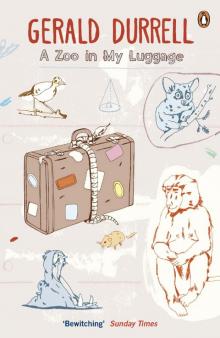 A Zoo in My Luggage
A Zoo in My Luggage The New Noah
The New Noah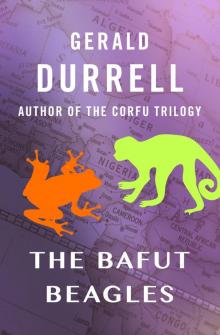 The Bafut Beagles
The Bafut Beagles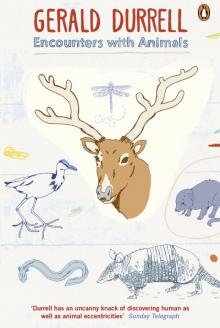 Encounters With Animals
Encounters With Animals Catch Me a Colobus
Catch Me a Colobus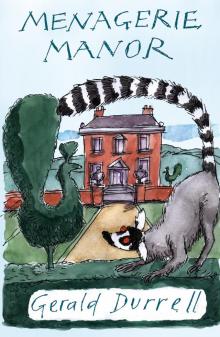 Menagerie Manor
Menagerie Manor The Picnic and Suchlike Pandemonium
The Picnic and Suchlike Pandemonium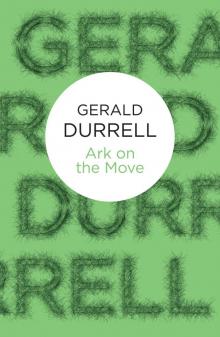 Ark on the Move
Ark on the Move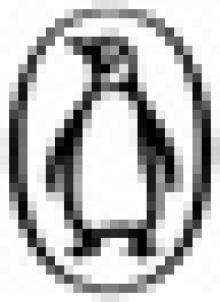 My Family and Other Animals
My Family and Other Animals Two in the Bush (Bello)
Two in the Bush (Bello) The Stationary Ark
The Stationary Ark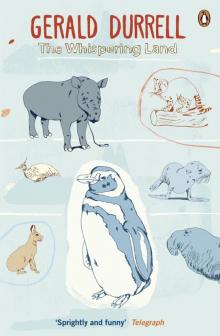 The Whispering Land
The Whispering Land Three Singles to Adventure
Three Singles to Adventure Fillets of Plaice
Fillets of Plaice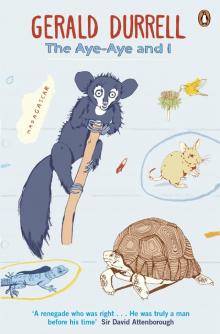 The Aye-Aye and I
The Aye-Aye and I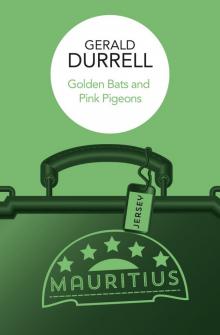 Golden Bats & Pink Pigeons
Golden Bats & Pink Pigeons The Drunken Forest
The Drunken Forest Marrying Off Mother: And Other Stories
Marrying Off Mother: And Other Stories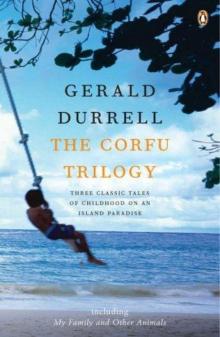 The Corfu Trilogy (the corfu trilogy)
The Corfu Trilogy (the corfu trilogy)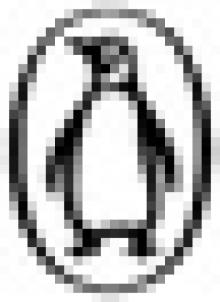 The Corfu Trilogy
The Corfu Trilogy Marrying Off Mother
Marrying Off Mother Two in the Bush
Two in the Bush